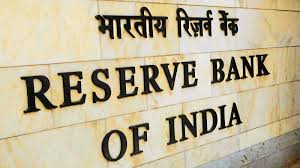The Urjit Patel Committee was formed in the year 2013 for reviewing and strengthening India’s monetary policy framework. Its recommendations and subsequent reforms have had a significant impact on the country’s economy. In this article, we will discuss the key aspects and outcomes of the Urjit Patel Committee recommendations and its impact on Indian monetary policy.

Table of Contents
Why Urjit Patel Committee was formed?
In the aftermath of the global financial crisis, there was a growing need for India to revamp its monetary policy framework and enhance the effectiveness of its central bank, the Reserve Bank of India (RBI). The committee was tasked with examining various aspects related to monetary policy, including the role and autonomy of the RBI, the inflation targeting framework, and the decision-making process.
Objectives Urjit Patel Committee
The Urjit Patel Committee set forth several objectives to guide its comprehensive review. These objectives included reducing inflation, enhancing the RBI’s independence, promoting transparency in decision-making, and strengthening the monetary policy framework’s credibility. The committee aimed to introduce reforms that would improve the overall effectiveness and functioning of India’s central banking system.
Key Recommendations
1. Inflation Targeting Framework: One of the committee’s significant recommendations was the adoption of a flexible inflation targeting framework. This approach focused on maintaining a target range for inflation, with a goal of achieving a 4% Consumer Price Index (CPI) inflation rate within a tolerance band of +/- 2%. The implementation of this framework aimed to bring stability and transparency to India’s monetary policy decisions.
2. Monetary Policy Committee (MPC): The committee proposed the establishment of an MPC, responsible for making decisions on key policy rates, such as the repo rate. The MPC comprises both members from the RBI and external members appointed by the government. This collaborative approach ensures a diverse range of perspectives, leading to well-informed and unbiased policy decisions.
3. RBI Autonomy: To strengthen the RBI’s autonomy, the committee recommended amending the Reserve Bank of India Act, 1934. This change aimed to clarify the roles, responsibilities, and decision-making powers of the RBI, providing a solid foundation for the institution’s independence.

4. Transparency and Accountability: The committee emphasized the importance of transparency and accountability in the functioning of the RBI. It recommended periodic reviews and assessments of the central bank’s performance, along with the publication of minutes from MPC meetings to enhance public understanding of policy decisions.
5. Reduce SLR: The committee recommended for reduction in Statutory Liquidity Ration (SLR). The initiative will boost the liquidity in the market.
6. RBI to Do away with Government Fund & Debt: The committee recommended RBI not to manage government cash or debt.
7. RBI to adopt CPI in place of WPI to measure the inflation level: the committee recommended to adopt CPI in place of WPI for inflation monitoring and targeting.
8 The Government to Support RBI: The committee suggested that the Indian Government should support RBI in inflation targeting.
Impact and Outcome of Urjit Patel Committee Recommendations
The Urjit Patel Committee’s recommendations have had a profound impact on India’s monetary policy framework and its overall economy. The adoption of flexible inflation targeting has led to a more disciplined and forward-looking approach to controlling inflation. The establishment of the MPC has brought greater transparency, diversity of viewpoints, and enhanced decision-making to the table.
The reforms have bolstered the RBI’s autonomy and its ability to focus on achieving the mandated inflation target. The shift towards a more accountable and transparent central bank has instilled confidence among investors, both domestic and foreign, promoting stability and credibility in the financial system.
Conclusion
The Urjit Patel Committee’s thorough review of India’s monetary policy framework and its subsequent recommendations and reforms have transformed the country’s financial landscape. The adoption of a flexible inflation targeting framework, the establishment of the MPC, and the reinforcement of the RBI’s autonomy have contributed to greater stability, transparency, and accountability in India’s monetary policy decisions.
Important Links